Selena, ‘Selena,’ and “Selenas”
by Bobby Finger
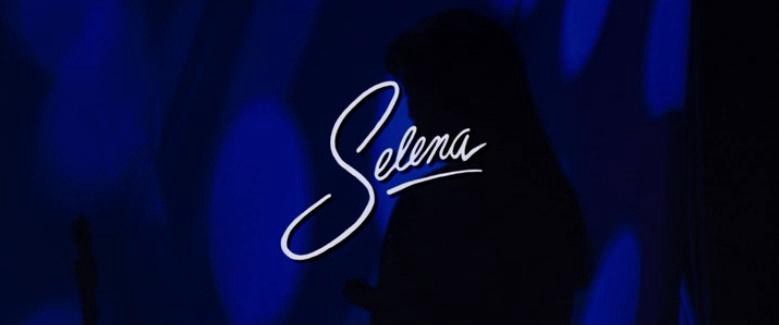
Selena Quintanilla Perez was murdered on this day in 1995.
If you lived in Texas in the 90s, as I did, you knew who Selena was even if you didn’t listen to her music. Your or your friends hung posters of her band on their walls, wore shirts with a white rose on the back, and visited her memorial if you happened to be in Corpus Christi. Whether you understood Spanish or not, you sang along with her music on the radio because the lyrics were as familiar as any other big song from a Texas recording artist. You knew who Selena was because her music seemed to have infiltrated everything in the state, and I believe a lot of that has to do with the biopic released just two years after her death. It took her story beyond the predominantly Mexican and Mexican American audiences who witnessed her rise to fame and made her a tragic American icon.
Selena was huge star when she passed away. Selena made her even bigger.
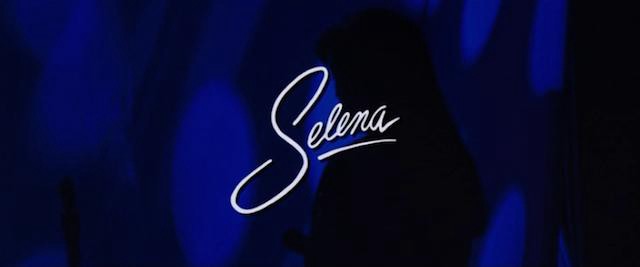
Selena begins backstage at what would become her most iconic live performance — the February 26, 1995 show at Houston’s Astrodome. She would perform four more times in her life, but this was the one people still talk about. The one when she entered on a horse-drawn carriage. The one when she began with a disco medley. The one when she wore that purple outfit.
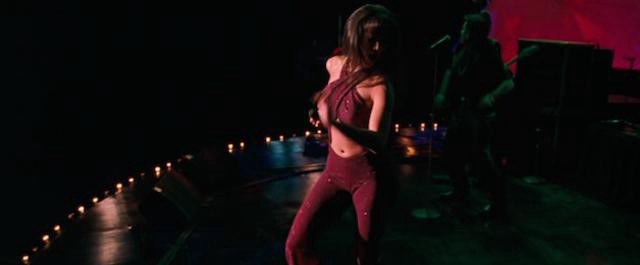
Though the movie quickly jumps back in time for 30-minutes of Selena as a young girl, it begins with this brief look at the show of a superstar playing to the largest crowd in the history of the Astrodome. And that decision to open with a glimpse of the singer at her peak makes everything that follows all the more tragic.
Selena falls in that category of they-died-too-young music biopics that feels like the first half of a Behind the Music episode. It’s the “chart-topping highs” without the “unthinkable lows” — the story of a beloved artist whose life was bursting at the seams with love and success, and whose greatest tragedy was their untimely death.
But back to her life.
After her Astrodome performance, we’re taken to Corpus Christi, Tex., in 1961. We see her father, Abraham, as a young man portrayed by an actor doing his very best Edward James Olmos impersonation. We see his doo-wop group, The Dinos, get rejected by a racist, whites-only club owner. We then see them get booed offstage for singing white music by the patrons of a local Mexican bar. Basically, we see The Dinos fail. And then we jump to Lake Jackson, Tex., 20 years later. Abraham has a good job, a house in a nice neighborhood, a happy wife, two kids who aren’t Selena, and one kid who is. The performance by Rebecca Meza as young Selena is quite awful, but that can be blamed at least partly on Gregory Nava’s screenplay. These scenes of Selena as a little girl are the movie’s weakest moments. They’re clunky, rushed, and feature terrible dialogue like:
“What are you doing up here?”
“I’m looking up and the moon and dreaming.”
If forcing your pre-teen children who aren’t interested in forming a band to form a band weren’t odd enough, these scenes manage to up the stage dad weirdness ante by presenting Abraham as more of a pushy stylist than a music teacher. “We’re gonna play rock ’n’ roll,” he tells his three protesting children while literally draping them in instruments they’ve never played before.

Later, as Selena, Suzette, and Abie stand beside the instruments they did not choose for themselves while wishing they were outside playing, Abraham marches in and shouts, “How come there’s no music coming from this room?” as though musical ability is forced, not learned. But! This odd method pays off, and the kids become good enough at playing music that their father makes another perfectly rational series of decisions — he opens a Mexican restaurant in town for his children to perform in. Then he quits his job.
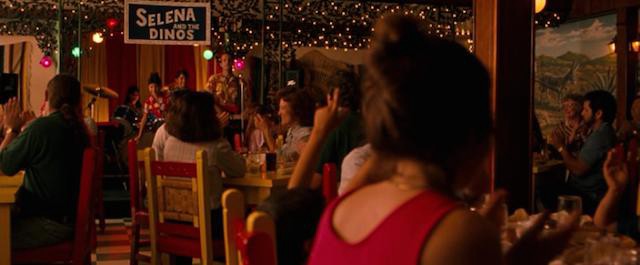
Oh. And then the restaurant closes.
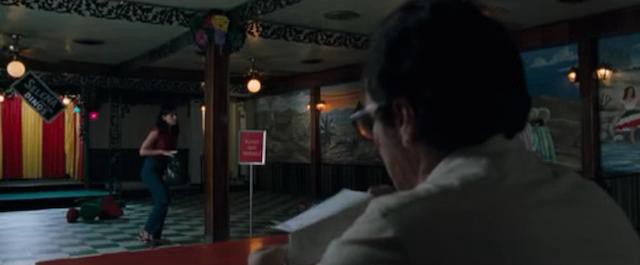
In what may be the movie’s final misstep, the restaurant’s financial problems are explained by this fun line of dialogue:
“It’s that Ronald Reagan. Como le dise? Reaganomics.”
With the restaurant closed and Abraham out of work, the family packs up and moves to Corpus Christi to be closer Abraham’s family. After their move, Abraham informs her that Selena and the Dinos will now be singing songs in Spanish.
“Dad! I don’t wanna sing in Spanish. I don’t like music in Spanish. I like Donna Summer,” she says.
“You’re an American, I’m an American,” he responds. “But you’re also Mexican. Deep inside. And that’s a wonderful thing. If you wanna be a singer, you have to sing from deep inside here. Do you know what’s in here?”
He points to her chest.
“Your heart!” she answers.
“Your corazón,” he responds.
It’s a warm, gentle moment, and the first of Abraham’s many lectures about what it means to be a Mexican American. Because Selena isn’t just a story about a singer who became very famous and died young, it’s a story about a female, Mexican American singer who became very famous and died young. And it’s also about to skip ahead to 1989 where Jennifer Lopez becomes a star right in front of your eyes.
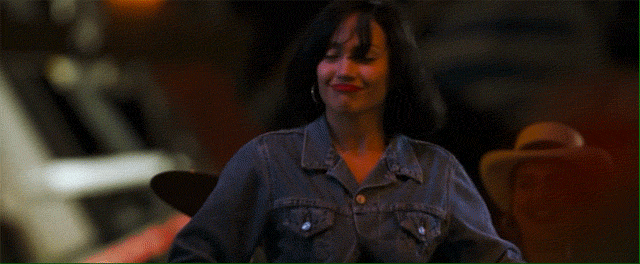
It’s a tremendous performance, really — one of her many late-90s/early 2000s roles that reminds you just how great she was at dramatic acting. (See Out of Sight, The Cell, and even the otherwise disastrous Jack). Her smile is infectious, her bustiers divine (“Bousti-caca — it’s a bra!” screams Abraham during that show in El Paso), and her Texas accent is charming (though, most importantly, it’s accurate). And how could I forget her spins! Lopez’s spins are glorious and would have made Selena proud.

From here on out, Selena is far from a plot-heavy biopic. It dances from performance to performance. Success to success. “Bidi Bidi Bom Bom” to “Amor Prohibido.” We don’t get much of a sense of her life outside of the family band, but we do get the sense that she A.) didn’t have much of one and B.) didn’t seem to mind. Moments inside the tour bus show a family in love with their work. Her brother writes hit after hit. Her sister lovingly screams for their parents upon learning that they’ve topped the charts for the first time. Her father gives his children the movie’s most memorable monologue about why being Mexican American is tough. She designs clothes while daydreaming of having children and owning a farm. She falls in love with her guitarist. Disagreements are settled with a hug or a head on the shoulder. Even her fans are a dream! In what is probably the movie’s most famous scene, two passersby attempt to help Selena and her siblings get their bus out of a ditch, and get their bumper is pulled off in the process. But no bother! The friendly young man says he’ll proudly hang it in his garage with a plaque underneath that reads “THIS BUMPER WAS PULLED OFF BY THE BUS OF SELENAS.”
“Anything for Selenaasssss,” Suzie and Abie mimic when telling the story to their parents. They give Selena a hard time because that’s what happy families do.

There are no drugs. There’s no backstabbing. No broken relationships. The Quintanillas were a family who had significantly more ups than downs, and before Selena’s death it appeared they would never again see the ground. Not even a mean, ignorant (and probably racist) saleswomen could keep Selena down.
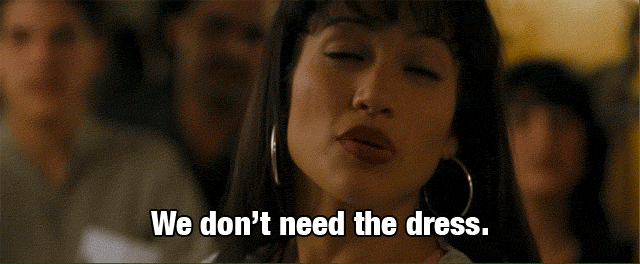
But, of course, the joy doesn’t last. Eventually we’re introduced to her fan club president, Yolanda Saldivar. (Giving the role of Selena’s murderer to one of Hollywood’s sweetest grandmothers, the late Lupe Ontiveros, was a brilliant move.) She stole from friends to give Selena a ring. She embezzles money from Selena’s business to keep for herself. And then, on a rainy day in a Corpus Christi motel, she gives both Selena and Selena their final acts. The film wisely doesn’t show the murder — only the events immediately following it — as it was released just two years after her death while the wounds were still fresh.
Before “Dreaming of You” was a karaoke staple with a permanent home on adult contemporary radio, it was the first page of Selena’s next chapter. It was part of what would have undoubtably thrust her into global superstardom. But when played over the film’s final scenes, including real life footage of Selena and her darkness-crushing smile, it becomes an elegy. A tragic reminder of a life and career that ended too soon.

During one hot Texas summer of my childhood, it must’ve been 1995, I was at a friend’s house for the afternoon. After growing bored of whatever game was being played, we went to his next door neighbor’s to see what she was up to. I remember noticing two enormous posters of Selena in her bedroom as we pestered her to come outside. I didn’t know who Selena was, let alone that she had recently been murdered, but as time passed I began noticing her image fairly regularly. Classmates wore shirts with her smiling face on them. People spoke in vague terms about her death. But she was a Tejano singer, so her music was in Spanish. And I didn’t know Spanish, so why should I care?
Years later, when Selena was released, some friends of my parents were talking to them about having just seen it. One of them, Sophie, almost cried while recounting the end. “When she dropped the ring!” She gasped. “Oh, the ring!” (Sophie always gasped when telling stories, so this wasn’t uncommon.) At the time I had no idea what she was going on about, but while watching the movie for the first time — we must’ve rented it in ‘98 — my eyes widened as Selena dropped Yolanda’s ring. There it was.

And then it all made sense. The posters and the shirts and the gasps and the songs I’d heard playing in countless central Texas businesses. Everything came together. Like so many people in this country, I wasn’t aware of her until well after she died. Once I was, there was no going back. The most bittersweet realization I have while watching Selena is that had it never been made, I very likely would have never paid attention to her music. What a tragedy that would have been.
Because of that reason alone, Gregory Nava’s Selena is essential. Because of her music and infectious charm and the way she brought joy to people all over the world, so is Selena.
Bobby Finger wants you watch this interview with Selena from 1993 and weep.